Tilefishes: Family Malacanthidae
Species: Caulolatilus princeps (Jenyns, 1840); from the Greek words caulo (stem) and latilus (probably a similar fish) and the Latin word princeps (leader).
Alternate Names: Poor man’s yellowtail, whities, blanquillo, blanka. In Mexico called pez blanco, blanquillo fino or pierna.
Identification: Elongate with a small mouth; distinguished by the very long single dorsal fin; long base of anal fin originates about middle of body; caudal peduncle rounded and slender. Brown to yellowish back, paler below; yellow or yellowish green edging on fins; blue stripe near edge of dorsal and anal fins. They also have very sharp serrated gill plates—so be careful in handling them.
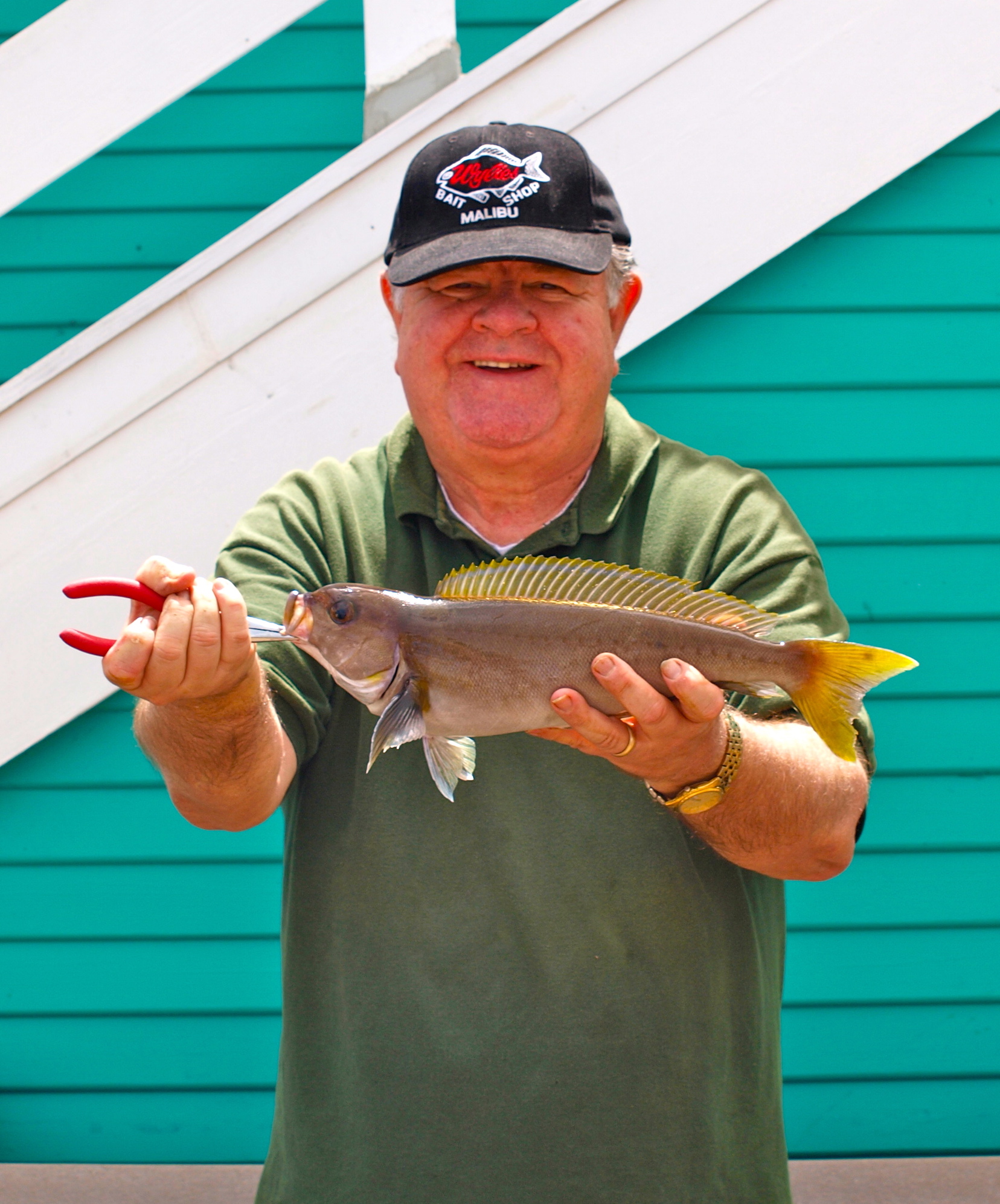
Size: To 40-inches, although most caught by anglers are less than 8 pounds in weight and most caught from piers are only 12-15 inches long. The California angling record fish weighed 13 lb 12 oz and was taken at the Cortez Bank, San Diego Co. in 1988. The diving record fish weighed 13 Lbs 12 oz and was taken at San Nicholas Island in 2010. The IGFA World Record fish weighed 17 Lbs 1 oz and was caught at the Hurricane Bank, California in 2011.
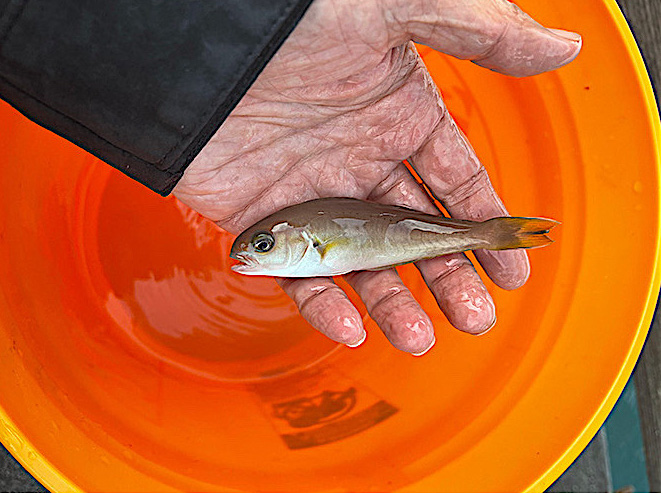
Baby ocean whitefish caught at the balboa Pier in 2022 by Evan Yeh
Range: Reported from Peru and Chile, the Galápagos Islands, and the Gulf of California north to Vancouver Island, British Columbia. Uncommon north of Point Conception and rare north of Monterey.
Habitat: Mostly found in offshore rocky reefs and banks although common around some kelp beds; shallow water in summer, deeper in winter. Found from shallow waters to at least 620 feet deep with the largest concentrations at 90-200 feet. Typically feeds on crabs, shrimp, octopuses, squid and small fish
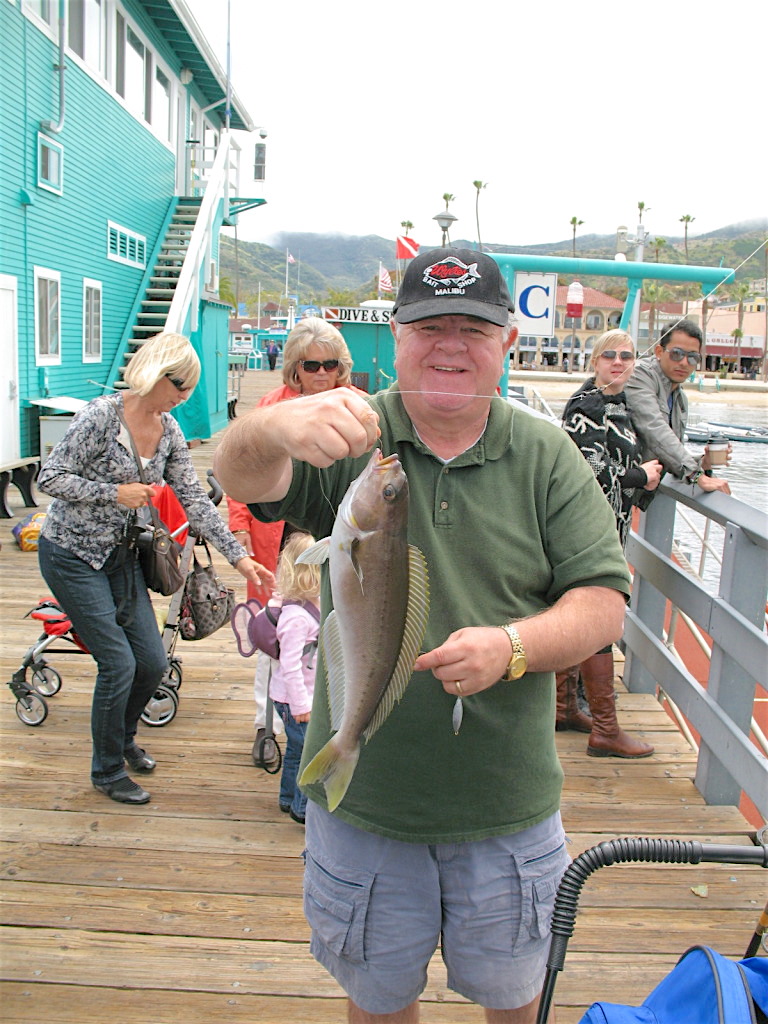
Another ocean whitefish from the Green Pleasure Pier in Avalon
Piers: Although occasionally seen at southern California piers near deep water or kelp, they are only really common at two piers, the Cabrillo Mole and Green Pleasure Pier, both in Avalon on Catalina Island. At the Green Pleasure Pier I have seen schools of ocean whitefish move into the waters around the pier and caught them on virtually every cast.
Shoreline: Rarely taken by shore anglers unless fishing at Catalina where they are common; Pebbly Beach near Avalon is a good spot late spring to summer.
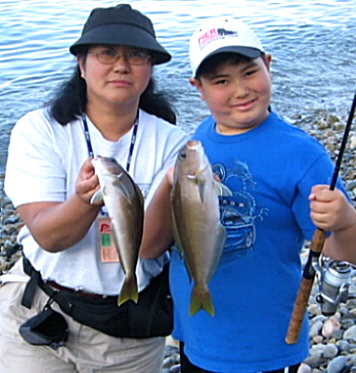
Ocean whitefish caught by Rita M and Kyle P at Pebbly Beach, Catalina Island
Boats: A common species for boaters fishing the southern California islands, especially Santa Catalina, Santa Barbara and San Clemente Islands; also reported to be abundant at the Cortez and Tanner Banks.
Bait and Tackle: Usually caught on the bottom though reported to typically feed four to six feet off the bottom. Top bait seems to be fresh squid cut into strips about 4 inches long and half an inch wide. It’s reported that a reverse dropper loop—with the hook on the bottom and the sinker hanging from a dropper loop a couple of feet up the line—can be deadly. Other good baits include ghost shrimp, market shrimp, mussels, worms and small live bait. Light to medium tackle and a size 4 or 2 hook is all that is needed for most of the pier-caught fish. Deeper water fish require stronger tackle.
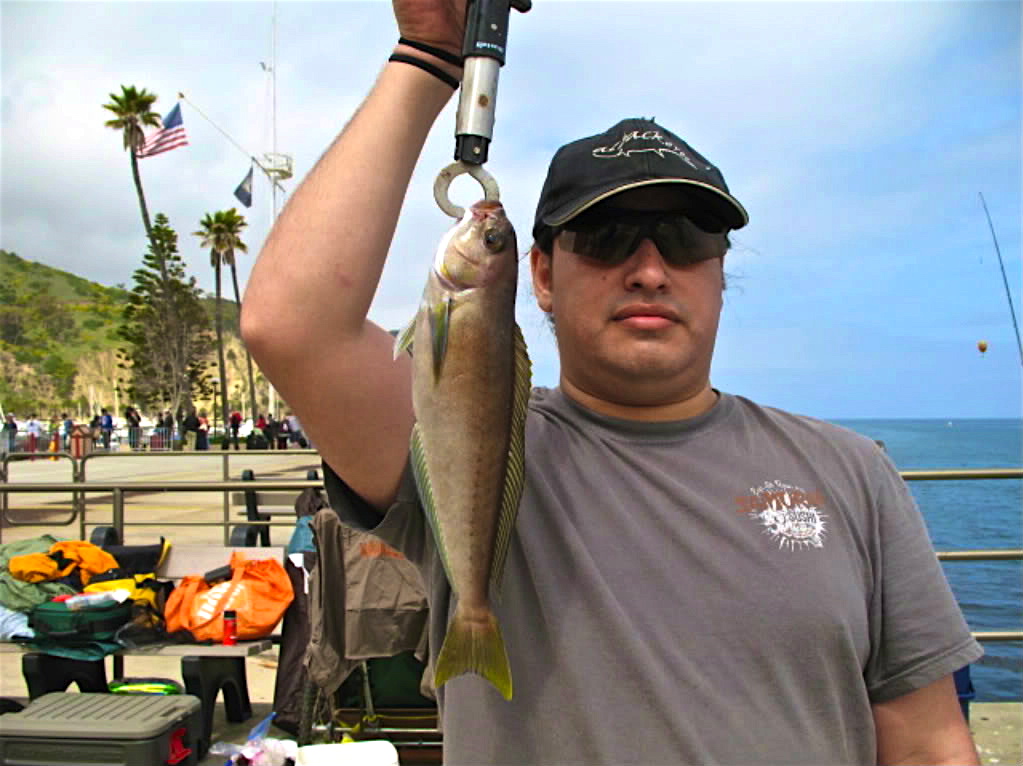
Ocean whitefish caught by Redkorn at the Cabrillo Mole in Avalon
Food Value: A good eating fish but somewhat bland in flavor with small flakes and a soft texture. The flesh is white in color and low in fat content. It can be prepared with basically any cooking method. However, some reports say that at certain times of the year, in certain areas, it seems to develop an unpleasant taste. As example, some people report a bitter taste from fish caught in shallow-water kelp beds (although apparently there’s no problem with fish caught in deeper waters). J. Charles Davis in his book California Salt Water Fishing (1949, A. S. Barnes and Company) said “an excellent food fish but should be skinned before cooking. The skin has a strong smell of iodine and if the fish is cooked without skinning, the flavor is imparted to the meat and makes it unpleasant. If skinned it is delicious.” I’ve only eaten skinned fillets and they were indeed delicious.
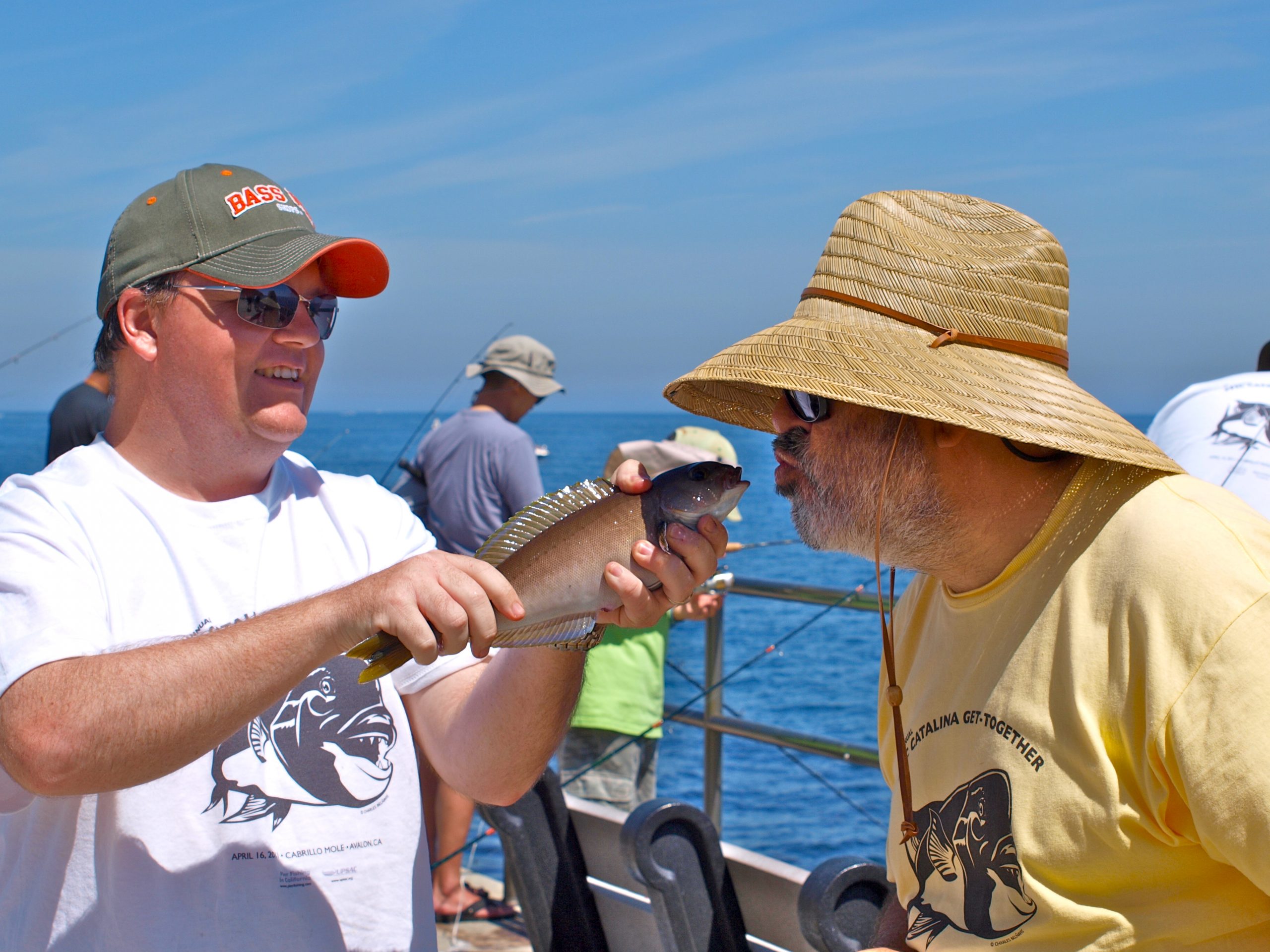
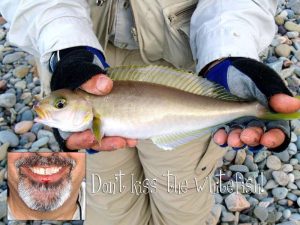
DO NOT KISS THE WHITEFISH, a lesson learned by Mahigeer (Hashem Nahid)
Comments: Due to the excellent fighting nature of these fish they are sometimes called the “poor man’s yellowtail.” Another more recent name, one apparently used on some partyboats, is “razor gill bottom dorado’ due to their very sharp serrated gill plates and the fight they put up. In California Salt Water Fishing by J. Charles Davis (1949), the author says “Be careful in handling this fish, when removing it from the hook, and when cleaning it. It has the sharpest gill covering (operacle) I’ve ever seen. It is actually razor sharp, serrated and will cut to the bone if you so much as touch it. While not poisonous, like the sculpin, it is quite capable of inflicting a very painful cut.” Given that their small mouths make them hard to lip latch many simply use a wet towel to grab and cradle their body.
One of my favorite quotes (and a quote within a quote) concerns ocean whitefish and comes from Milton Love’s great book Probably More Than You Want To Know About The Fishes Of The Pacific Coast. “Here’s a florid, but fun quote from C. F. Holder’s The Game Fishes of the World (1913, Hodder and Stoughton) about fishing for whitefish at San Clemente Island. ‘Possibly the finest game fish of this region among the small fishes is the Blanquillo or whitefish… When fishing with Dr. Gifford Pinchot in 1910 we found a rock one day rising to within ten feet of the surface then dropping to a great depth… The zone of thirty or forty feet was evidently devoted to the blanquillo… some weighing ten or twelve pounds. I took so many whitefish that day on the side of that beautiful mountain of the sea, up whose sapphire sides Queen Gulnore might have appeared at any moment, that I never felt quite the same regarding blanquillo.’ So, what’s the deal with the Queen Gulnore and why does she like whitefish so much?”
The Rest of the Story — Queen Gulnore (usually spelled Gulnare is a character found in Fairy Tales from the Arabian Nights and the story The King of Persia and the Princess of the Sea. She was a most beautiful and charming slave who was married to the King Saleh of Persia. Eventually he discovered that she is of royal blood from a kingdom under the sea and reunites her with her family. She chooses to stay with her husband and their child Prince Beder (who is able to breathe underwater and on land). As for whitefish—who knows?
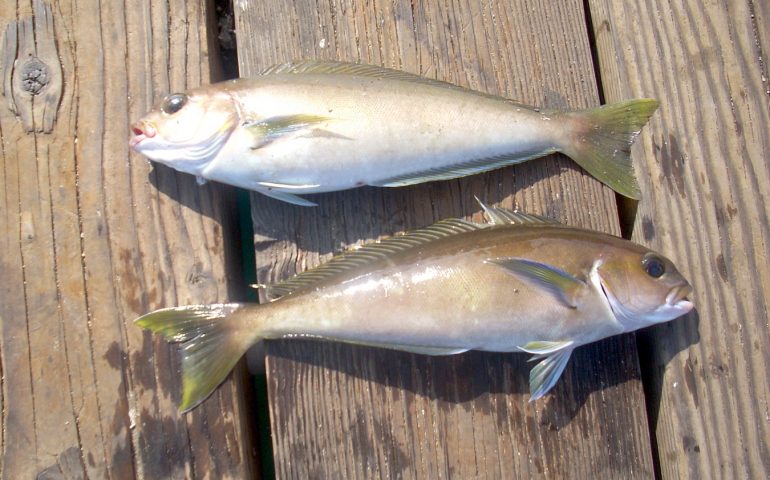
Woah! Don’t ever kiss a whitefish!
I hate whitefish! They are extremely difficult to catch with hook-and-line due to their bait-stealing ability. They hardly ever take the whole hook, even when the hook is very small. Worst of all they do a lot of damage to you if handled incorrectly and produce very little meat.
An angler on a party boat I was on caught 30+ whitefish in two hours. He said he was putting a piece of cut squid the size of his pinky nail on a #3 J-hook. He then swung his rod violently at every little bump and nibble.
The book referred to in the comments – C. F. Holder’s The Game Fishes of the World (1913, Hodder and Stoughton) can be read or even downloaded for free at Archive.Org. It’s in the public domain.
As for Milton Love’s passage about blanquillo and the whimsical Queen Gulnore reference, it’s such a perfect example of how writers weave mythology, history, and fishing into something so vibrant. The imagery of “a beautiful mountain of the sea” and the connection to Arabian Nights adds an unexpected and poetic layer to the fishing tale. Queen Gulnore’s underwater kingdom ties neatly to the idea of marine wonder, but her connection to whitefish? Maybe it’s just the magic of storytelling—blurring the line between imagination and reality.